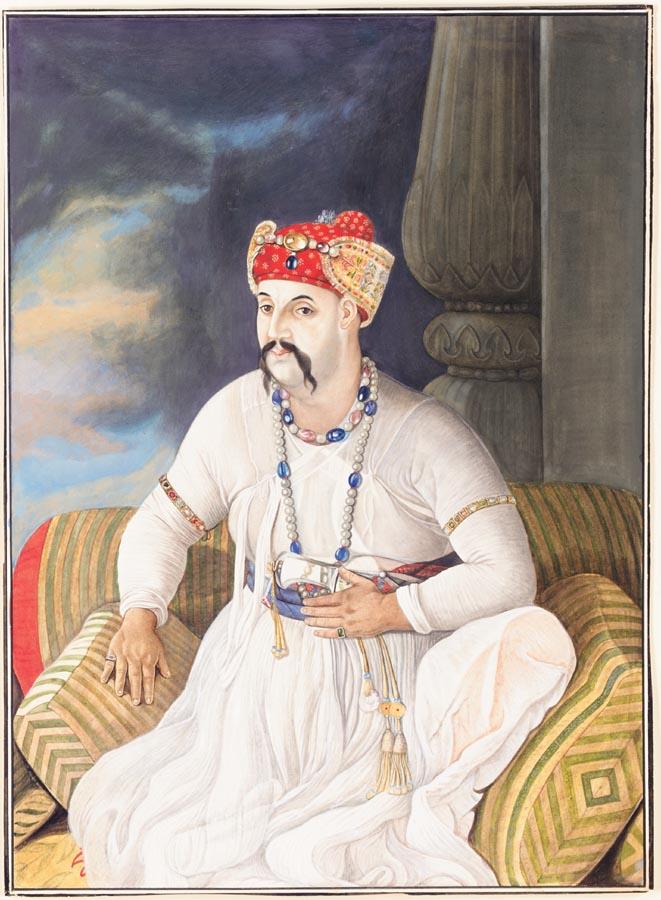

Asif ud-Daulah, by John Zoffany, c.1785-90
Source: http://search.sothebys.com/jsps/live/lot/LotDetail.jsp?lot_id=4FGN7
(downloaded May 2005)
"A PORTRAIT OF THE NAWAB OF OUDH, ASAF-UD-DAULA, LUCKNOW, INDIA, CIRCA 1785-90; watercolour and gouache on card, with a seated figure in relaxed pose, dressed in white with a jewelled turban, necklaces and bazubands, his waist band supporting a fine rock crystal hilted dagger, unframed.
CATALOGUE NOTE: inscriptions: in ink on the reverse in Urdu: 'the likeness of Asaf Ud-Daula'
This painting is after a portrait of Asaf-ud-Daula by the renowned German artist Johann Zoffany (1733-1810), completed in 1784 and now in the India Office Library (Archer 1979, no.89, p.147). Both paintings exhibit similar details, such as the striped green and cream cushions, the lowering background and various features of Asaf-ud-Daula's jewellery and costume.
Zoffany trained in Germany and Rome, later making his way to Britain where he began a stellar career as a humble drapery painter, rising to Royal patronage and in 1769 his career in Britain was capped by a personal recommendation from King George to be a founding member of the Royal Academy. Falling out of favour with the Queen, and lured by the financial promise of India, Zoffany relocated in 1783, spent his first month in Madras, moved to Calcutta and from thence, following in Tilly Kettle's footsteps, travelled to Lucknow and the court of the Nawab of Oudh, Asaf-ud-Daula.
A jolly character, if an apparently ineffectual potentate, Asaf-ud-Daula was described in a letter from Lewis Ferdinand Smith as "mild in manners, generous to extravagance, and engaging in his conduct; but he has no great mental powers though his heart is good...he is fond of lavishing his treasures on gardens, palaces, horses, elephants, and above all, on... all sorts of European manufactures... [including the] elegant paintings of a Lorraine or a Zophani (sic)... all he looks to is that there be money sufficient for his private expenses." (Archer 1979, p.144-145). Despite this contemporary description of the Nawab as a bungling glutton, ghazals praising his generosity to the people, especially during the famine of 1783-84, were still being recited during the nineteenth-century (Bayly 1990, p.82, no.78).
After Tilly Kettle's stint in Oudh from 1771 to 1773, it became the fashion for local artists to copy European portraits. Indeed Zoffany's paintings were widely imitated even whilst he practised, as indicated in the list of effects belonging to a European in 1801 that included "seven from pictures by Zoffany" (Archer 1979,p.143). The present portrait is a tribute, both to Zoffany's fame and his expertise."
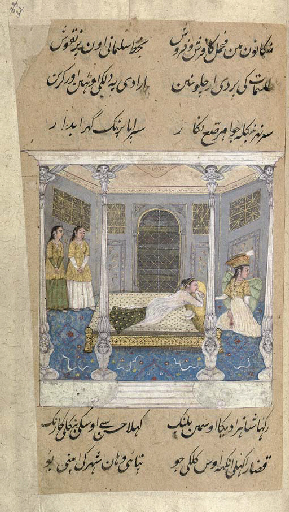
Mir Hasan's famous Urdu masnavi Sihr ul-Bahan (1785) was dedicated to Asif ud-Daulah
Source: http://www.christies.com/LotFinder/lfsearch/LotDescription.aspx?intObjectId=4892422
(downloaded Mar. 2007)
"MIR HASAN DIHLAVI: SIR AL-BAYAN. LUCKNOW, NORTH INDIA, PERIOD OF AKBAR II (AH 1221-53/1806-1837 AD). Urdu manuscript on buff paper with 104ff. plus 3 fly-leaves, each with 11ll, of black nasta'liq arranged in two columns, headings in red nasta'liq, with 26 miniatures in gouache heightened with gold, with brown morocco binding with central stamped medallion, worn, repairs, many pages remargined, in red fitted case. Folio 9¾ x 6 1/8in. (24.8 x 15.6cm.)
Lot Notes: Mir Hasan Dihlavi is one of the most accomplished 18th century poets. He spent most of his life at the court of Awadh, and wrote this present work, which was dedicated to and includes a eulogy to the local ruler Asaf al-Dawla, in 1785. Indeed Bosworth writes that 'under its local rulers, Oudh, and especially the capital Luknow, with its court circle, witnessed a burgeoning of Urdu literature' (Clifford Edmund Bosworth, The New Islamic Dynasties, Edinburgh, 2004, p.337). This text tells of the love of Prince Benazir and Princess Badr-i Munir, the kidnap of the Prince at the hands of Mahrukh, the enamoured fairy and the hero's eventual marriage.
The colouring and European influences found in the present copy are typical of the style of Lucknow, and this was in fact copied there in the court studio. The manuscript cannot be precisely dated on account of a partly obliterated colophon, but what is legible is a reference to a regnal year of Akbar Shah. The manuscript seems most likely to date to the first quarter of the 19th century."
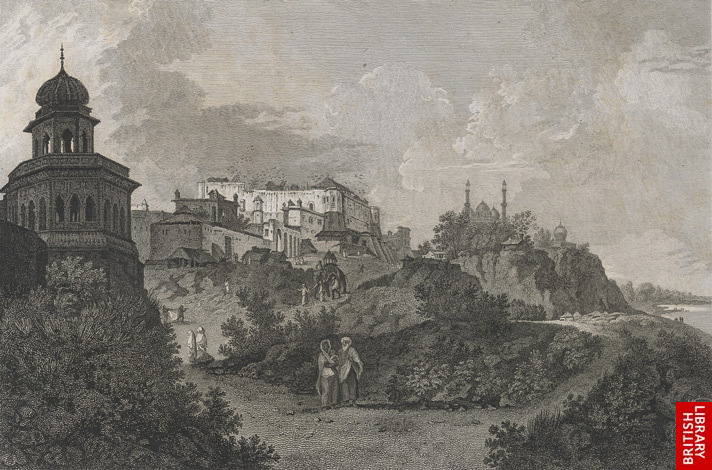
*A view of the Palace of the Nabob Asoph ul Dowlah at Lucknow; by James Fittler, 1793* (BL)
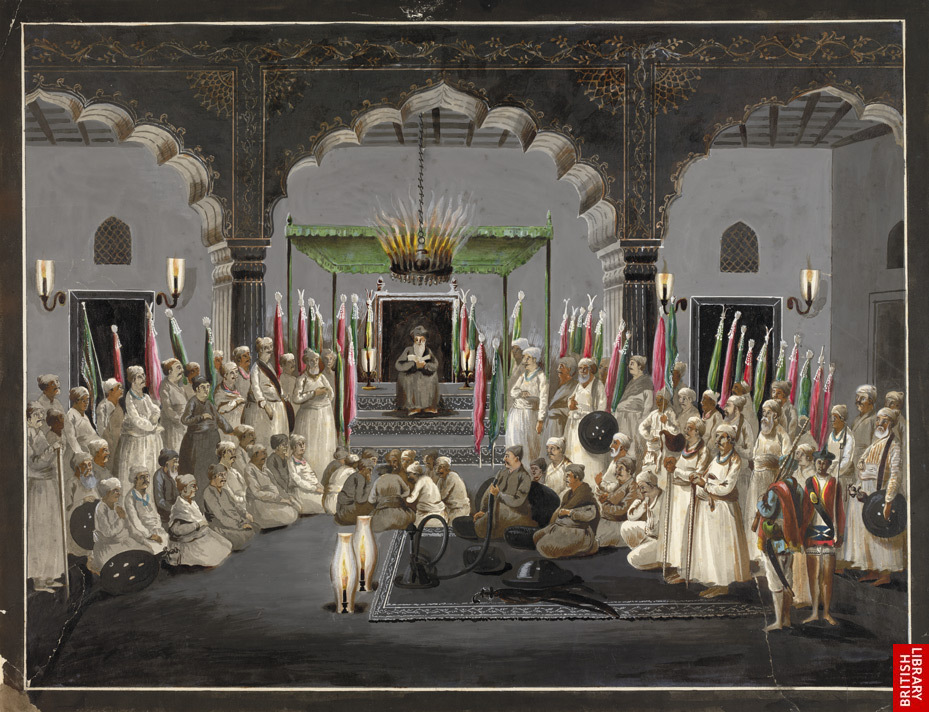
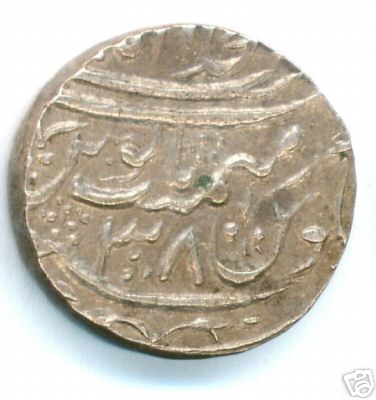 |
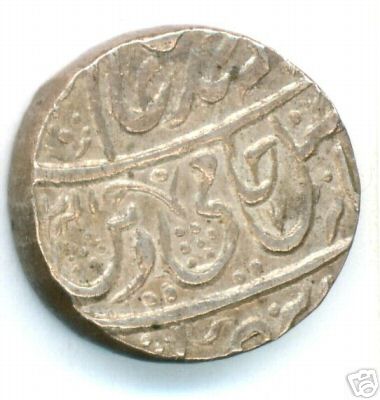 |
A silver ashrafi issued by Asif ud-Daulah from the Najibabad mint in AH 1211 (1796/7), regnal year 38
Source: ebay, May 2007
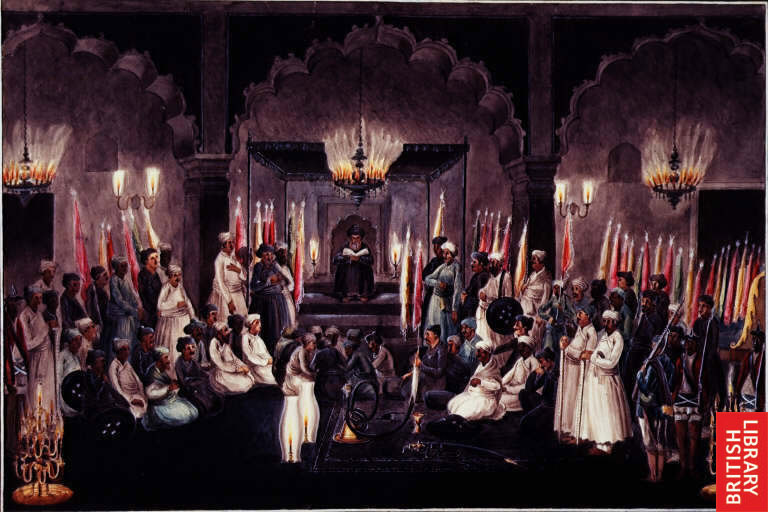
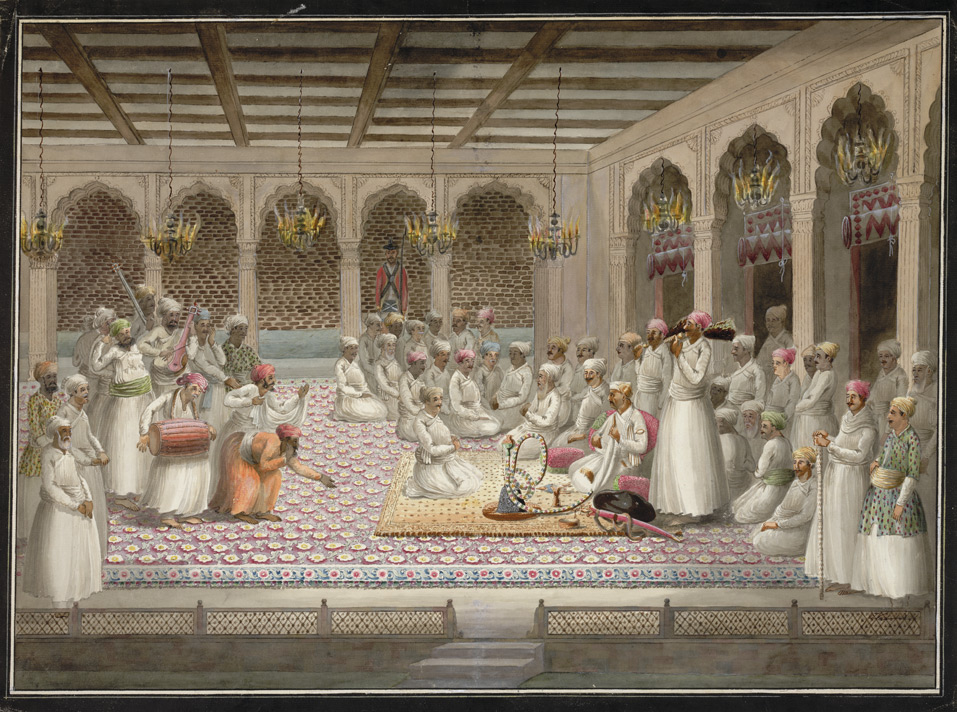
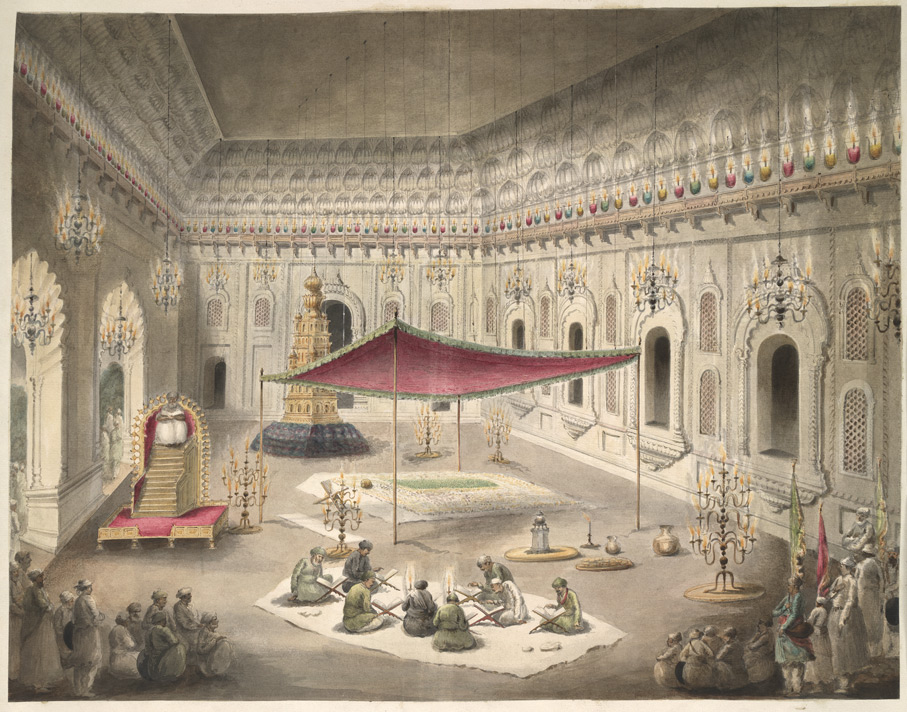
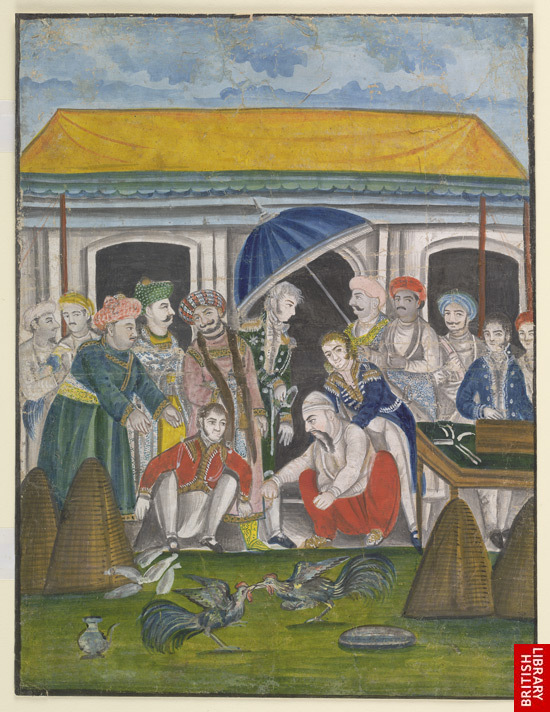
== Indian Routes index == Indian Routes sitemap == Glossary == FWP's main page ==